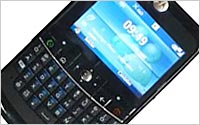 The proportion of U.S. mobile
subscribers with smartphones has swelled to 44%, led by adoption among those ages 18 to 34, according to third-quarter mobile data
released by Nielsen Thursday.
The proportion of U.S. mobile
subscribers with smartphones has swelled to 44%, led by adoption among those ages 18 to 34, according to third-quarter mobile data
released by Nielsen Thursday.
That figure is more than double the 18% of two years ago and on track to meet Nielsen’s projection that half of American mobile users will have
smartphones by the end of 2011. (comScore estimates U.S. smartphone penetration somewhat lower, at 38.5% as of the end of October.)
Smartphone penetration has been closely tracked because it
is viewed as a springboard for growing mobile media and advertising as well as m-commerce. In that vein, the Nielsen report shows the share of smartphone owners accessing the mobile Web and
downloading apps increased to 57% and 49%, respectively, in the third quarter.
advertisement
advertisement
Game-playing on smartphones has grown, especially over the last year, thanks to hit games like “Angry
Birds" and “Fruit Ninja.” The share of people downloading games is up 83% to 35%, while those playing online games have nearly doubled to 16%. Streaming online music or radio is the third
fastest-growing activity, up by two-thirds to 29% of smartphone users. The mobile video audience, meanwhile, has increased 35% to 31 million, or about 14% of mobile users.
When it comes to
mobile apps, it’s no surprise that Android and iOS dominate, with 83% of those who downloaded titles in the last 30 days using an Android-based device or iPhone. The Google mobile platform,
which runs on 44% of U.S. smartphones, has also eclipsed Apple’s iOS in share of recent app downloads, by 49% to 34%.
Among Android users, Google apps such as Gmail, Google Search,
Android Market and Google Maps are the most popular, with Facebook squeezing in among them. With so many apps -- now more than 1 million apps through Android and iOS devices alone -- finding new or
specific titles isn’t getting any easier. Searching app storefronts remains the most common way to find new apps, with nearly two-thirds (63%) going that route.
Recommendations from
friends and family, third-party sites and apps that advertise other apps are other ways that people learn about new apps. The top 50 apps account for the majority of time spent on Android phones, but
the lineup of most popular apps is constantly changing. One in five was new to the top 50 in September.
The Nielsen report also shows widespread adoption of daily deal sites on smartphones.
Among people who download apps, 87% have used deal apps in the last 30 days. The most popular were Groupon (79%) and Living Social (48%), with Yelp a distant third at 9%. Looking at m-commerce more
widely, the study found that half (49%) of mobile consumers use their smartphones frequently while out shopping.